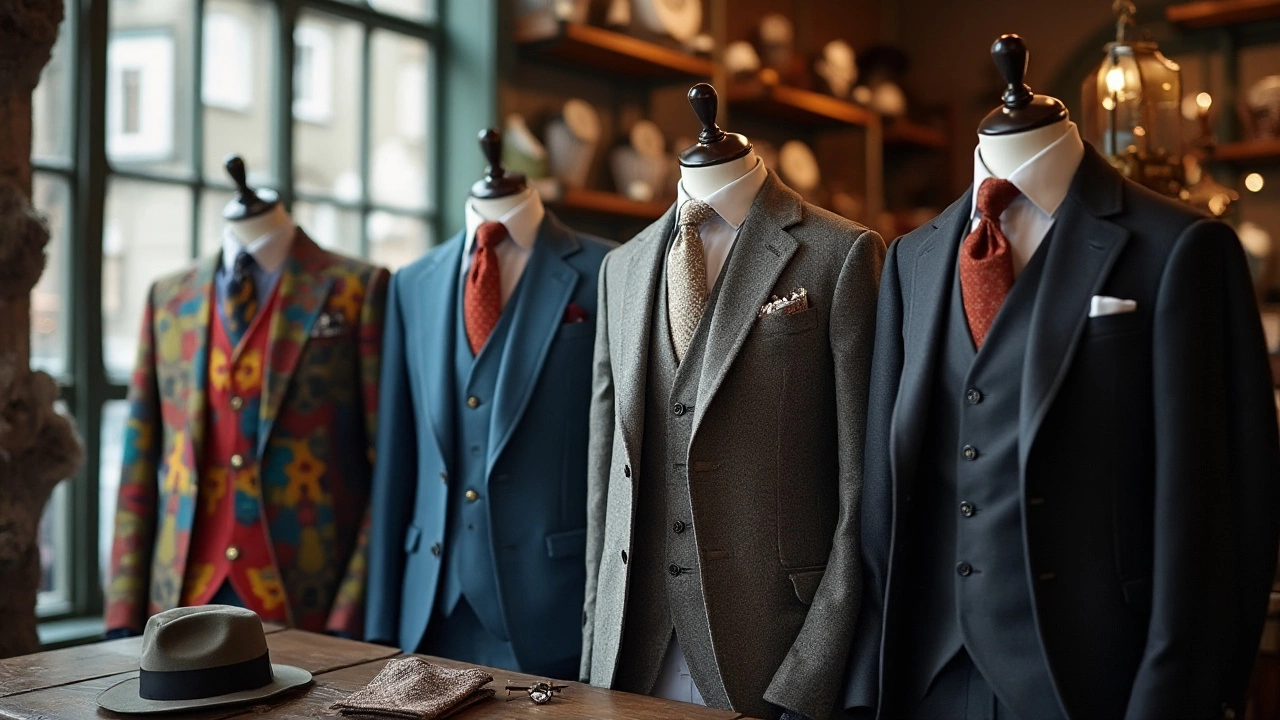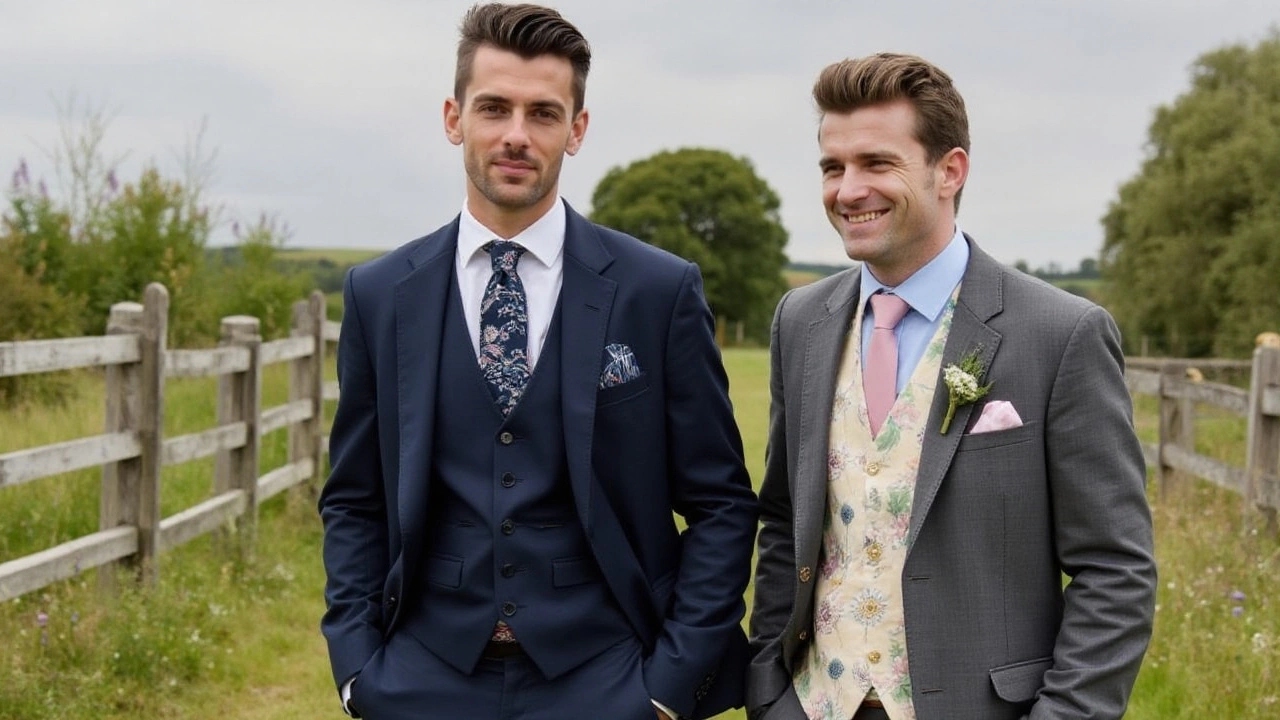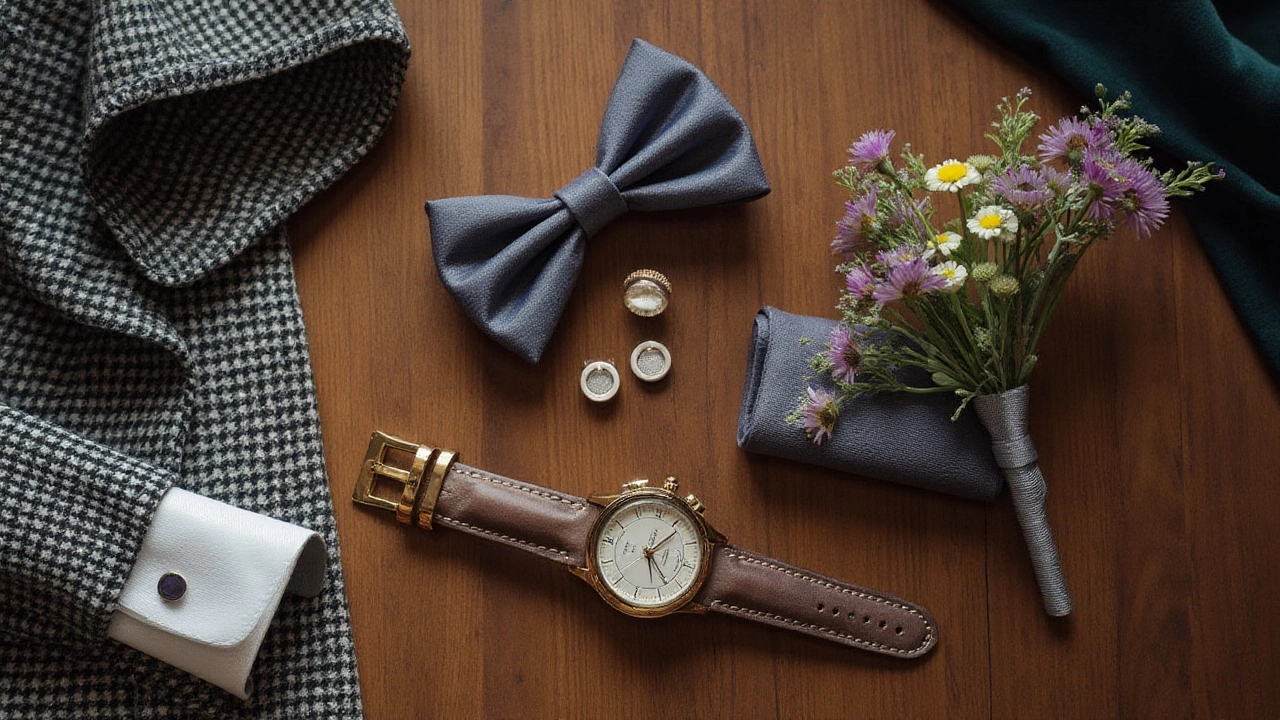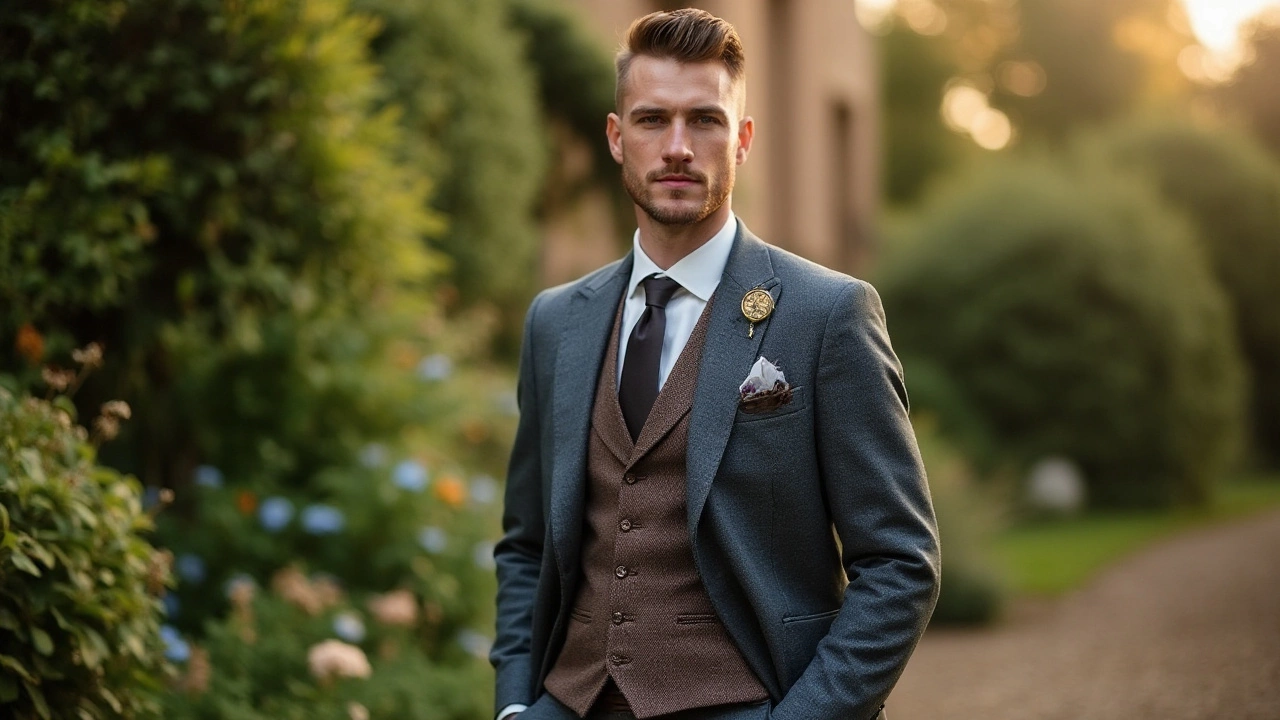The timeless allure of a groom in a 3-piece suit cannot be overstated, yet, with changing times, the question arises: is this elegant ensemble still necessary? Weddings serve as a stage where tradition and personal style can fuse beautifully, making the groom's attire a focal point. From the classic 3-piece layout to newer, more relaxed options, grooms today have a wide array of choices that can express their individuality and keep them comfortable.
The 3-piece suit, consisting of a jacket, trousers, and waistcoat, has been a hallmark of sartorial excellence for decades. This ensemble has graced men during pivotal moments, quietly embodying a certain gravitas. However, the modern groom faces plentiful options that diverge from this traditional path.
Today's fashion-forward grooms can explore numerous alternatives that still look dapper without adhering strictly to tradition. The landscape of wedding attire is vast and diverse, presenting the opportunity to mix and match styles while maintaining elegance. It’s a journey of personal expression through choices that balance aesthetic and comfort, allowing the groom to shine just as brightly as their love story promises.
- The Tradition of the 3-Piece Suit
- Modern Alternatives to the 3-Piece Suit
- Personalizing Wedding Attire
- Tips for Choosing the Right Outfit
The Tradition of the 3-Piece Suit
The legacy of the 3-piece suit as a prime choice for grooms traces its roots back to the sartorial elegance of the late 19th and early 20th centuries. This distinguished ensemble, consisting of a jacket, trousers, and waistcoat, has often acted as a symbol of a man's entrance into classic adult sophistication. During this era, men dressed in sharply tailored suits not just for weddings, but for an array of formal occasions, viewing them as integral to demonstrating one's societal standing as well as personal style. A well-fitted 3-piece suit was regarded as the epitome of gentlemanly attire, navigating not just the aisles of wedding chapels but also the nuanced etiquette of daily life.
As the 20th century progressed, the wedding attire landscape evolved, yet the 3-piece suit retained its esteemed place for ceremonies. Its appeal lies in its versatility and the subtle message it conveys - commitment to time-honored traditions combined with the adaptability to fit into various themes and settings. Every generation reinvents this classic staple, adjusting cuts, fabrics, and accessories while preserving its foundational charm. This adaptability has enabled the 3-piece suit to sustain relevance across decades, allowing grooms the chance to honor their heritage while introducing modern nuances into their wardrobe choice.
Interestingly, according to historical fashion chronicles, King Charles II of England was one of the early adopters advocating a uniform approach to men’s attire. He decreed the wearing of a long coat, waistcoat, and breeches, which evolved over centuries into what we now recognize as the suit. The waistcoat, a defining element of the 3-piece suit, adds a layer of formality and elegance, often crafted from luxurious fabrics or with elaborate patterns that offer a dash of personality beneath the outerwear. Although styles have shifted, with modern suiting introducing slim fits and minimalist designs, the core ethos of the 3-piece suit as a badge of formality and respect has persevered.
The fabric selection for these suits has also seen a transformation and serves as an intimate choice for those donning them. From the thick, muted tones of wool popular in the early 1900s, often chosen to endure chilly church services, to lightweight cotton and linen blends of today’s summer weddings, the shift marks the adaptation to comfort without losing its dignity. Grooms today may opt for lighter shades or patterned textiles, a nod to personal reflection as much as practicality. A 3-piece suit in textured herringbone wool, for instance, can exude warmth and earthiness, marrying tradition with personal flair seamlessly.
Occasionally, one might hear whispers of bygone-era nostalgia, for the tradition-heavy, sometimes dashing grooms of yore. They channel the grandiosity often associated with Charles Frederick Worth's revolutionary tailoring in Paris in the 1800s, the man touted to have inspired a focus on custom-fitted, layered menswear. Weddings, after all, foster romance not just of two souls but also of the past meeting the present. The idea of slipping into a meticulously crafted 3-piece is akin to brushing with history.
"The traditional suit evokes a timeless elegance that transcends generations," fashion historian Alexa Chung once noted in her exploration of sartorial heritage, emphasizing its status as a beloved fixture.
The tradition of the 3-piece suit thrives today with more options than ever, reaffirming its status in the world of wedding attire. The groom who dons such a suit steps into the long lineage of well-dressed men, embodying not just personal style but decades of fashion evolution that have celebrated elegance and refinement. This longstanding piece remains a testament to the enduring allure and respectful nod to tradition that weddings faithfully uphold.

Modern Alternatives to the 3-Piece Suit
In recent years, the classic 3-piece suit has faced stiff competition from a variety of alternative wedding attire options that cater to the modern groom's desire for personal expression and comfort without sacrificing elegance. While the tradition of the 3-piece suit remains steadfast, many contemporary weddings are now embracing diversity in dress codes, enabling grooms to explore a plethora of styles that align more closely with their personalities and the overall event vibe.
A popular alternative is the sleek two-piece suit. Unlike its three-piece counterpart, it provides a more relaxed aesthetic while maintaining a polished appearance. Grooms opting for this style often appreciate its versatility, as it transitions easily from formal vows to a lively reception. Fabrics play a significant role in defining the ambiance, with linen and lightweight wool being preferred for summer ceremonies, while velvet and tweed add richness to autumn and winter weddings. The absence of a waistcoat allows greater flexibility with the shirt and tie, encouraging creativity in patterns and colors.Groom suits are also evolving to include separates and contrasting pieces. This approach empowers each groom to blend hues and textures, crafting a look that echoes their narrative. This trend not only diminishes monotony but also invites an air of individuality. Gray trousers paired with a navy blazer or a bold, patterned jacket over plain pants showcase personality without departing from style. Accessorizing becomes key, from quirky bow ties to bold pocket squares, these elements can all inject character and nuance into the ensemble.
For those willing to venture further, the casual look is gaining traction, particularly for outdoor or destination weddings. Here, grooms might don a refined shirt paired with sharply tailored chinos. This choice, combined with handsome accessories like suspenders or leather shoes, provides comfort without compromising on style. The growing acceptance of such casual flair reflects a broader shift in wedding traditions, which now favor intimate, more personalized gatherings. A landmark 2023 study revealed that 60% of couples prioritized individualized elements in their wedding planning, reflecting a trend towards celebrations that honor personal storylines over rigid customs.
According to John Hopkins, a renowned fashion editor, "The modern groom isn't just following trends; he's setting them. Today's groom wants his attire to speak to who he is as a person, not just adhere to expectations."
Exploring bolder choices yet, some grooms brave colors that break with tradition entirely. From pastel suits to deep, dramatic hues like burgundy or emerald, the options are myriad. Such color-centric styles pop against classic wedding backdrops like white floral arrangements or even rustic barn venues, creating a distinctive visual narrative. An unembellished suit in a striking color still exudes formality but with a daring twist. The fabric remains crucial in such instances, with silk and satin enhancing the overall effect.
Ultimately, these alternatives highlight a shift away from strict norms, allowing men to embrace their wedding attire as an extension of their own story. As the role of tradition evolves, the modern groom's journey to sartorial elegance is defined less by convention and more by a unique blend of style and personal significance.

Personalizing Wedding Attire
Personalizing wedding attire is an alluring venture that allows the groom to reflect not only elegance but also individuality. This magnificent process begins with a keen understanding of what personal style means to the groom, aligned with the theme and formality of the wedding itself. A pivotal part of this personalization is choosing colors that hold sentimental value, move away from the conventional black or navy, and delve into shades that appeal personally. You may consider hues that complement the overall wedding palette, with the waistcoat or shirt offering a splash of unusual color, enhancing the outfit’s uniqueness.
When personalizing, the fabric chosen is more than just about comfort; it's an expression. Selecting exceptional materials like tweed or velvet can dramatically change the suit's aesthetic, making it memorable and remarkable. Mixing textures can also work, where a wool jacket pairs beautifully with a silk waistcoat. As James Laver, the famous English fashion historian, once stated,
"Clothes are never a frivolity: they always mean something,"the material and cut become an integral part of storytelling.
Adding personalized details such as monograms or unique buttons further engrains personal sentiments into the attire. This is where embroideries can be enhanced with initials or meaningful motifs subtly placed inside the jacket or on the cuffs. Another aspect of personalizing the groom’s attire involves tailoring, where unique cuts and fits emphasize distinctive physique, providing not just a perfect fit but an intrinsic confidence boost, which shines through.
Accessorizing with Personality
Accessorizing presents another canvas for personalization. Opting for distinctive pieces such as pocket squares with a story or cufflinks passed down through generations enrich the outfit's narrative. Ties and bowties offer a chance to play with patterns and designs that might nod to personal interests or cultural elements, with many alternatives allowing men to showcase their personalities subtly yet effectively. The choice of shoes, often underestimated, is another area ripe for personalization, with styles and materials speaking volumes about the wearer’s inclination—consider polished leather in unique colors or even a custom-made pair.
A less traditional approach might abandon the idea of a consistent look among the groomsmen, allowing each individual to choose attire in a unified color but of differing styles, creating a harmonious yet personalized entourage. This can be accommodating for different body types, enabling a cohesive yet tailor-made appearance, showing respect to individual preferences while still keeping a connection to the wedding theme. Choosing among these elements demands careful attention to balance, where personality is evident without overshadowing the occasion’s formal nature.
Exploring Non-Traditional Suits
The contemporary wedding scene is an exciting realm where traditional notions and modern views blend seamlessly, forming practices where men can truly explore their style. Some grooms may opt entirely out of the 3-piece suit tradition in favor of modern ensembles that highlight their personality in distinctive approaches. For instance, some seek stylish overcoats during winter weddings, adding flair while staying functional. Summer weddings might see lighter fabrics or linen suits, customized to exude both comfort and elegance against sunlit backdrops.
Research conducted in the fashion industry has suggested a shift, with a significant percentage of young grooms steering toward casual elegance, aligning personal style with the informal shift seen in wedding trends. These alternative outfits not only offer comfort but can also align beautifully with cultural traditions or themed weddings, making the experience personal and reflective of their journey as a couple.

Tips for Choosing the Right Outfit
Embarking on the journey of selecting the perfect wedding attire can be daunting yet thrilling. Every groom wishes to leave a significant mark on his special day, and what he wears plays a pivotal role in this. The key is not just about adhering to traditional groom suits styles but understanding what makes each option unique to match your personality and the wedding theme. Start by considering the time of the year and the venue. If you’re hosting a beach wedding under the summer sun, the bulky nature of a 3-piece suit might not be the way to go. Instead, opt for lighter materials such as linen or cotton to stay comfortable and at ease.
Staying true to your personal style is paramount. It’s essential to ensure that you feel like yourself when you walk down the aisle. Consult with a trusted tailor who can offer personalized advice on fit and style, turning a standard suit into a remarkable piece representative of who you are. Moreover, personalization doesn't mean fashion blunders—keep an eye on balance and color coordination to ensure the overall ensemble remains flattering. Remember, timeless doesn’t automatically mean classic black and white; modern menswear encourages grooms to embrace colors that complement their natural skin tone while maintaining sophistication.
Accessories can substantially enhance or diminish the elegance of an outfit. A well-chosen tie or bowtie can reflect a splash of personality while aligning with the color palette of the event. Similarly, the inclusion of cufflinks can add an expression of meticulous detail. For those considering stepping outside the 3-piece comfort zone, try mixing a formal coat with less traditional aspects like patterned trousers or a printed shirt, maintaining an appropriate level of elegance. Here’s a reputable quote that perfectly captures the delicate balance required:
"Fashion is about dressing according to what's fashionable. Style is more about being yourself." - Oscar de la Renta
Budget management is another critical aspect. Yes, it's essential to invest in quality fabric and design, but it’s equally important to remain realistic about expenditure. Rentals can offer flexibility, particularly if the attire is less about creating a keepsake and more about adhering to a style for a fleeting, memorable moment. Do research on hiring options as this allows significant savings, especially for attires that are worn just once. Likewise, consider tailoring a suit you already own, repositioning it to fit the occasion of a wedding. Considering these nuanced aspects can truly make a difference in crafting a look that is authentic and memorable.

